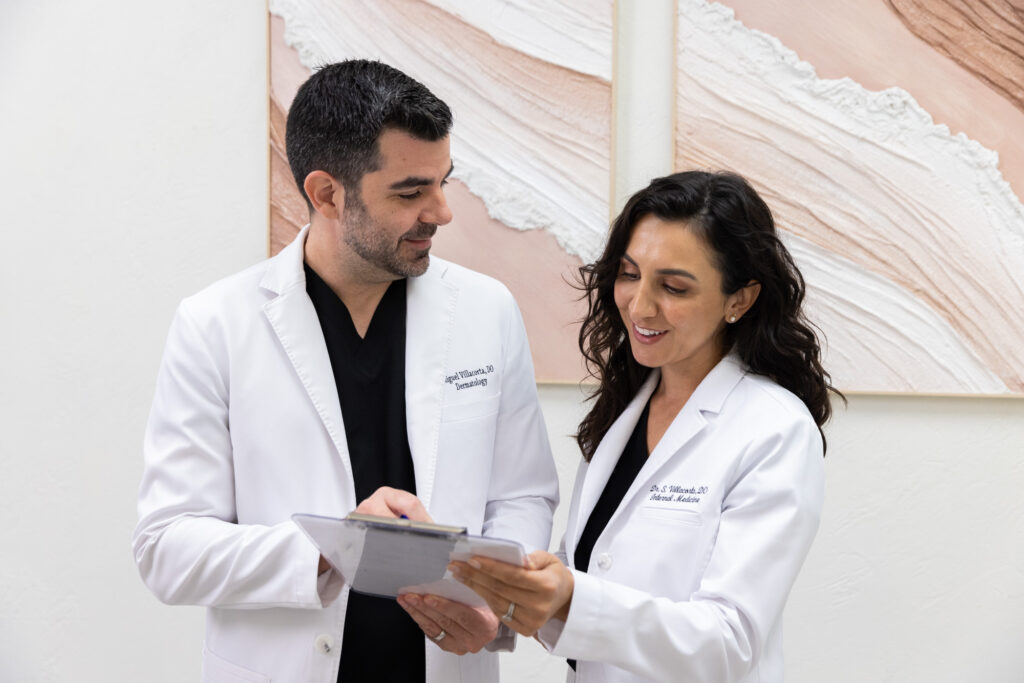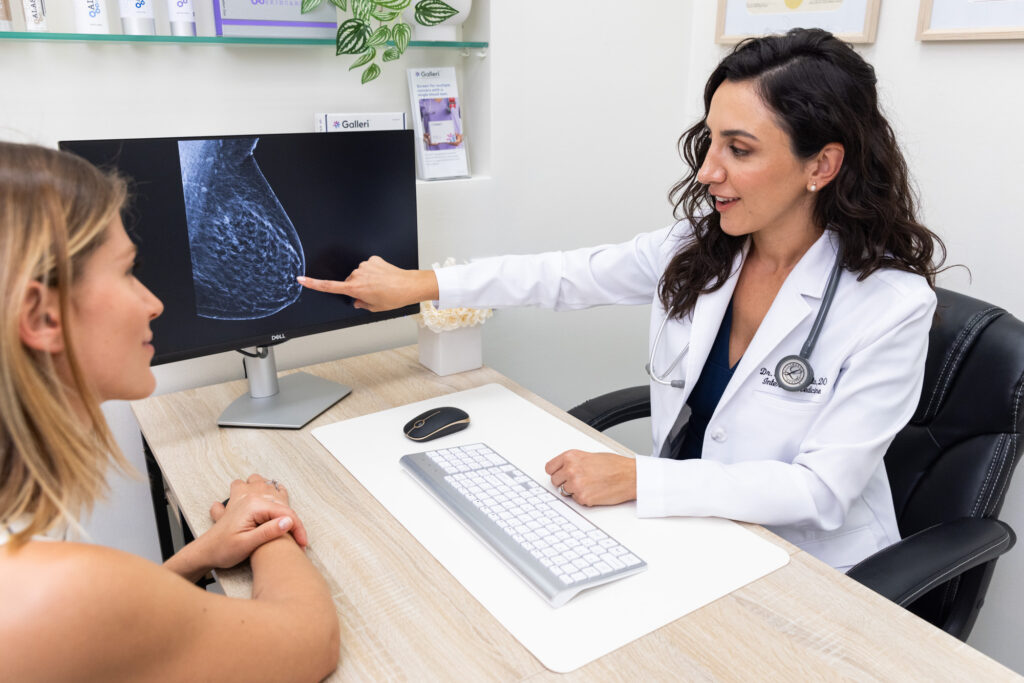
90% of visible signs of aging are due to sun damage.
The skin utilizes sunlight to help us create Vitamin D, which is crucial for healthy bones, immunity, and serotonin production.
But the risk of overexposure to ultraviolet rays can cause severe damage to the skin. And this doesn’t just stop at your typical sunburn. Dullness, fine lines, and hyperpigmentation are all signs of sun damage, too.
The epidermal (outer) layer of skin contains melanin or skin pigment. Melanin protects the skin from the harm of ultraviolet rays. When tanning, melanin production increases, and pigment deepens. As your tan fades, cells are shed from the skin, and melanin lowers once more.
But what happens when overexposure becomes habitual over the years? Skin cancer and cell damage are possible results. Hyperpigmentation and melasma are other conditions typically noted from overexposure to the sun. And sun spots give way to aging skin appearance, which may be difficult to conceal with makeup.
It is extremely important to check your skin regularly for any changes or unusual pigmentation. The earlier sun damage is detected, the less of a risk you pose for skin cancers. Discuss your sun damage and your treatment options with your dermatologist.
The Top 3 Rules for Protecting Your Skin:
-
- Every day, wearing a broad-spectrum sunscreen to reduce harm and reflect UVA and UVB rays.
- Be wary of post-acne scarring. Not protecting the skin when enjoying time in the sun can make post-acne hyperpigmentation worse.
- Pay attention to certain products that you are using in your regimen that may cause heightened sensitivity to the sun. This includes certain topical and oral medications, as well.
Important Notes on SPF
When choosing an SPF, always look for a product with the protection of least 30+.
How much to use? You should use 1 oz to cover your entire body. This is equivalent to a shot glass of sunscreen for the whole of the body. Use the appropriate amount for specific areas of the body. The fingertip unit (FTU) is an easy way to remember. You can follow the guide below, which indicates the FTUs needed per area for adequate protection.
Keep in mind that no matter which sunscreen you use, the blocking properties are used up after a few hours, so remember to reapply throughout the day.
Treatments for Sun Damaged Skin
While it is always ideal to protect the skin before treatment, reversing certain degrees of sun damage is possible. Galt Dermatology offers the latest and highest quality services and treatments for photoaged and sun-exposed skin.
-
- Laser Resurfacing: Targets fine lines and wrinkles, loose skin, spider veins, and hyperpigmentation.
- Retinoids: Targets fine lines and wrinkles, age spots, loose skin, and hyperpigmentation.
- Chemical Peels: Targets fine lines and wrinkles, age spots, and certain degrees of hyperpigmentation.
- Microneedling/Microdermabrasion: Targets loose skin, age spots, and hyperpigmentation.
If you are experiencing signs of sun damage, consult with your physician to explore which treatment option may best suit your skin to reverse the effects of the damage.
Look Out for These Ingredients to Use in Your Home Regimen
-
- SPF 30+: Fights sun damage and cellular damage, containing the optimal physicians-approved blend of ingredients to absorb and reflect damaging UV rays.
- Niacinamide: Decreases melanin production and prevents hyperpigmentation to an extent. Niacinamide works as an antioxidant and improves elasticity over time.
- Topical Retinoids: Vitamin A derivatives are a powerful ingredient for stimulating epidermal cell turnover, brightening hyperpigmentation, decreasing the appearance of fine lines and wrinkles, and improving texture irregularities.
- Vitamin C: A super antioxidant for a good reason. Vitamin C neutralizes free radicals, preventing damage to an extent before it even occurs. Vitamin C also repairs connective tissue and stimulates new collagen production.
- Alpha-Hydroxy Acids (AHA’s): Reduce the appearance of hyperpigmentation and slowly resurface the skin over time. Diligent use of SPF products is of the utmost importance when using AHA’s as they may make skin even more sensitive to the sun.
The Importance of Keeping Skin Protected
While there are several treatment options available to reverse some of the damage from sun exposure, the best treatment will always be prevention. Signs of damage go far beyond cosmetic woes, skin cancers, and even a suppressed immune system are possible outcomes. UVA overexposure could also damage collagen and elastin fibers in the skin, which are important for maintaining skin fullness, elasticity, and a youthful complexion.
Use your SPF and take ample precautionary measures to prevent damage before you decide to treat it.
If your skin could use some extra love but you aren’t sure where to start, try our virtual Treatment Planning Tool to get personalized recommendations.


